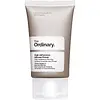What's inside
What's inside
 Key Ingredients
Key Ingredients

 Benefits
Benefits

 Concerns
Concerns

 Ingredients Side-by-side
Ingredients Side-by-side

Caprylyl Methicone
Skin ConditioningWater
Skin ConditioningPEG-12 Dimethicone/PPG-20 Crosspolymer
Phenethyl Disiloxane
Skin ConditioningPolysilicone-11
Cyclopentasiloxane
EmollientIsodecyl Neopentanoate
EmollientVinyl Dimethicone/Methicone Silsesquioxane Crosspolymer
Cyclomethicone
EmollientPEG-10 Dimethicone
Skin ConditioningSodium Hyaluronate
HumectantPseudoalteromonas Exopolysaccharides
Skin ConditioningSodium Salicylate
PreservativeAdipic Acid/Neopentyl Glycol Crosspolymer
Methyl Methacrylate/PEG/PPG-4/3 Methacrylate Crosspolymer
Tocopherol
AntioxidantAcrylamide/Sodium Acryloyldimethyltaurate Copolymer
Emulsion StabilisingSilica Dimethyl Silylate
EmollientLaureth-12
EmulsifyingPolyacrylate Crosspolymer-6
Emulsion StabilisingIsohexadecane
EmollientPolysorbate 80
EmulsifyingDimethicone
EmollientCyclohexasiloxane
EmollientCetearyl Dimethicone Crosspolymer
Vp/Va Copolymer
Cyclotetrasiloxane
EmollientAmodimethicone
Hydroxypropyl Methylcellulose
Emulsion StabilisingCitric Acid
BufferingButylene Glycol
HumectantHexylene Glycol
EmulsifyingEthylhexylglycerin
Skin ConditioningPhenoxyethanol
PreservativeChlorphenesin
AntimicrobialCaprylyl Methicone, Water, PEG-12 Dimethicone/PPG-20 Crosspolymer, Phenethyl Disiloxane, Polysilicone-11, Cyclopentasiloxane, Isodecyl Neopentanoate, Vinyl Dimethicone/Methicone Silsesquioxane Crosspolymer, Cyclomethicone, PEG-10 Dimethicone, Sodium Hyaluronate, Pseudoalteromonas Exopolysaccharides, Sodium Salicylate, Adipic Acid/Neopentyl Glycol Crosspolymer, Methyl Methacrylate/PEG/PPG-4/3 Methacrylate Crosspolymer, Tocopherol, Acrylamide/Sodium Acryloyldimethyltaurate Copolymer, Silica Dimethyl Silylate, Laureth-12, Polyacrylate Crosspolymer-6, Isohexadecane, Polysorbate 80, Dimethicone, Cyclohexasiloxane, Cetearyl Dimethicone Crosspolymer, Vp/Va Copolymer, Cyclotetrasiloxane, Amodimethicone, Hydroxypropyl Methylcellulose, Citric Acid, Butylene Glycol, Hexylene Glycol, Ethylhexylglycerin, Phenoxyethanol, Chlorphenesin
Water
Skin ConditioningIsodecyl Neopentanoate
EmollientDimethicone
EmollientDimethicone/Bis-Isobutyl PPG-20 Crosspolymer
EmollientHydroxyethyl Acrylate/Sodium Acryloyldimethyl Taurate Copolymer
Emulsion StabilisingWater, Isodecyl Neopentanoate, Dimethicone, Dimethicone/Bis-Isobutyl PPG-20 Crosspolymer, Hydroxyethyl Acrylate/Sodium Acryloyldimethyl Taurate Copolymer, Isohexadecane, Phenethyl Disiloxane, Isoceteth-20, Polysilicone-11, Tocopherol, Polysorbate 60, Trisodium Ethylenediamine Disuccinate, Phenoxyethanol, Chlorphenesin
 Reviews
Reviews

Ingredients Explained
These ingredients are found in both products.
Ingredients higher up in an ingredient list are typically present in a larger amount.
Chlorphenesin is a synthetic preservative. It helps protect a product against bacteria in order to extend shelf life. In most cases, Chlorphenesin is paired with other preservatives such as phenoxyethanol and caprylyl glycol.
Chlorphenesin is a biocide. This means it is able to help fight the microorganisms on our skin. It is also able to fight odor-releasing bacteria.
Chlorphenesin is soluble in both water and glycerin.
Studies show Chlorphenesin is easily absorbed by our skin. You should speak with a skincare professional if you have concerns about using Chlorphenesin.
Learn more about ChlorphenesinDimethicone is a type of synthetic silicone created from natural materials such as quartz.
What it does:
Dimethicone comes in different viscosities:
Depending on the viscosity, dimethicone has different properties.
Ingredients lists don't always show which type is used, so we recommend reaching out to the brand if you have questions about the viscosity.
This ingredient is unlikely to cause irritation because it does not get absorbed into skin. However, people with silicone allergies should be careful about using this ingredient.
Note: Dimethicone may contribute to pilling. This is because it is not oil or water soluble, so pilling may occur when layered with products. When mixed with heavy oils in a formula, the outcome is also quite greasy.
Learn more about DimethiconeWe don't have a description for Isodecyl Neopentanoate yet.
Isohexadecane is added to enhance texture, emulsify, and to help cleanse. It is an isoparrafin. It is a component of petrolatum.
Due to its large size, Isohexadecane is not absorbed by the skin. Instead, it sits on top and acts as an emollient. Emollients help keep your skin soft and smooth by trapping moisture within.
Isohexadecane is often used in products designed to help oily skin. It is lightweight and non-greasy while helping to moisturize. When mixed with silicones, it gives a product a silky feel.
Learn more about IsohexadecanePhenethyl Disiloxane is a type of silicone.
Phenoxyethanol is a preservative that has germicide, antimicrobial, and aromatic properties. Studies show that phenoxyethanol can prevent microbial growth. By itself, it has a scent that is similar to that of a rose.
It's often used in formulations along with Caprylyl Glycol to preserve the shelf life of products.
Polysilicone-11 is a film-forming silicone that creates a non-tacky and matte finish on the skin. It's commonly used to improve texture, absorb excess oil, and help active ingredients spread evenly.
Due to its "rubber-like" structure, it stays on the skin's surface instead of being absorbed. On the skin, it creates a flexible layer that enhances wearability and stability.
Tocopherol (also known as Vitamin E) is a common antioxidant used to help protect the skin from free-radicals and strengthen the skin barrier. It's also fat soluble - this means our skin is great at absorbing it.
Vitamin E also helps keep your natural skin lipids healthy. Your lipid skin barrier naturally consists of lipids, ceramides, and fatty acids. Vitamin E offers extra protection for your skin’s lipid barrier, keeping your skin healthy and nourished.
Another benefit is a bit of UV protection. Vitamin E helps reduce the damage caused by UVB rays. (It should not replace your sunscreen). Combining it with Vitamin C can decrease sunburned cells and hyperpigmentation after UV exposure.
You might have noticed Vitamin E + C often paired together. This is because it is great at stabilizing Vitamin C. Using the two together helps increase the effectiveness of both ingredients.
There are often claims that Vitamin E can reduce/prevent scarring, but these claims haven't been confirmed by scientific research.
Learn more about TocopherolWater. It's the most common cosmetic ingredient of all. You'll usually see it at the top of ingredient lists, meaning that it makes up the largest part of the product.
So why is it so popular? Water most often acts as a solvent - this means that it helps dissolve other ingredients into the formulation.
You'll also recognize water as that liquid we all need to stay alive. If you see this, drink a glass of water. Stay hydrated!
Learn more about Water